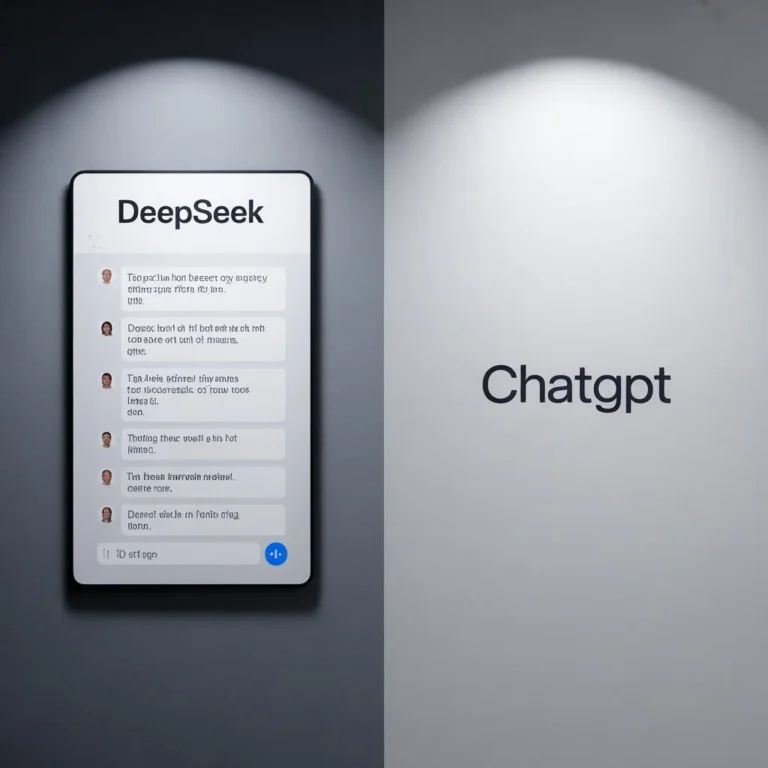DeepSeek vs. Llama: Which AI Model Offers Better Customization?
Choosing the right AI model for your specific needs can feel like navigating a maze. Two prominent contenders in the open-source arena are DeepSeek and Llama. Both offer powerful capabilities, but their approaches to customization differ significantly. This guide will explore the customization options available for each, helping you determine which model best aligns with your project goals.
We’ll delve into the nuances of fine-tuning, the ease of integration, and the level of control you have over each model. By the end, you’ll have a clear understanding of whether DeepSeek or Llama offers the better path to tailoring an AI model to your unique requirements.
Understanding AI Model Customization
Customizing an AI model allows you to adapt its pre-trained capabilities to specific tasks or datasets. This process enhances performance and relevance. It ensures the AI model is optimized for your particular use case. Customization can involve fine-tuning, prompt engineering, or even modifying the model’s architecture.
Note: Customization is key to unlocking the full potential of AI models for specialized applications.
DeepSeek: A Focus on Reasoning and Efficiency
DeepSeek is an AI model family known for its strong reasoning capabilities and computational efficiency. Developed with a reinforcement learning-first approach, DeepSeek excels in tasks requiring logical analysis and problem-solving. Its open-source availability makes it attractive for developers seeking customization options.
DeepSeek models are designed to be cost-effective and scalable, making them suitable for various applications, from research to enterprise solutions. The DeepSeek family includes models of varying sizes, allowing users to choose the best fit for their hardware and performance needs.
Customization Options for DeepSeek Models
DeepSeek offers several avenues for customization. These options allow users to tailor the model to specific tasks and datasets. The open-source nature of DeepSeek facilitates experimentation and modification.
- Fine-tuning: Fine-tuning involves training the pre-trained model on a smaller, task-specific dataset. This process adapts the model’s parameters to better suit the target application. For DeepSeek, fine-tuning can significantly improve performance on specialized tasks like coding or mathematical reasoning.
- Prompt Engineering: Crafting effective prompts is crucial for eliciting desired responses from any language model. With DeepSeek, prompt engineering can be used to guide the model’s reasoning process and improve the accuracy of its outputs.
- Model Distillation: DeepSeek AI has created distilled models based on Llama and Qwen architectures. Distillation involves training smaller, more efficient models to mimic the behavior of the larger DeepSeek-R1 model. This allows for faster inference and reduced computational costs.
- Integration with Amazon Bedrock: DeepSeek models are available on Amazon Bedrock, providing a managed environment for deployment and customization. This integration simplifies the process of building and scaling generative AI applications.
These customization options provide developers with the flexibility to adapt DeepSeek to their specific needs. The open-source nature of the model encourages community contributions and further enhancements.
DeepSeek-R1: A Closer Look
DeepSeek-R1 stands out for its innovative training techniques, including reinforcement learning. According to DeepSeek, this model achieves its reasoning capabilities through these techniques. This focus on reasoning makes it particularly well-suited for applications requiring logical analysis and problem-solving.
Reminder: DeepSeek-R1 is available on platforms like Amazon Bedrock and Amazon SageMaker, offering different deployment and customization paths.
Llama: Flexibility and Community Support
Llama, developed by Meta, is another prominent open-source AI model known for its flexibility and strong community support. Llama is designed to be adaptable to a wide range of tasks, making it a popular choice for researchers and developers alike.
The open-source nature of Llama has fostered a thriving ecosystem of experimentation and refinement. Users can modify and optimize its architecture to suit their specific needs. This level of control makes Llama a preferred choice for those who want full control over their AI stack.
Customization Options for Llama Models
Llama offers extensive customization options, allowing users to tailor the model to their specific requirements. These options include fine-tuning, prompt engineering, and architectural modifications.
- Fine-tuning: Like DeepSeek, Llama can be fine-tuned on task-specific datasets to improve performance. The Llama models have been designed to be easy to fine-tune, allowing developers to quickly adapt them to new tasks.
- Prompt Engineering: Effective prompt engineering is essential for eliciting desired responses from Llama. By carefully crafting prompts, users can guide the model’s behavior and improve the accuracy of its outputs.
- Architectural Modifications: The open-source nature of Llama allows for modifications to the model’s architecture. This level of control enables advanced users to optimize the model for specific hardware or performance requirements.
- Integration with Hugging Face: Llama is well-integrated with the Hugging Face ecosystem, providing access to a wide range of tools and resources for customization and deployment.
These customization options make Llama a versatile choice for a wide range of applications. The active community surrounding Llama ensures ongoing support and development.
Llama 3: The Latest Iteration
Llama 3 is the latest iteration of the Llama model family. It offers significant improvements in performance and capabilities compared to its predecessors. Meta’s decision to open-source Llama 3 has further fueled its popularity and adoption.
Note: Llama 3 stands out for its ability to handle a broad range of NLP tasks, from text generation and summarization to translation and conversational AI.
DeepSeek vs. Llama: A Detailed Comparison of Customization
When comparing DeepSeek and Llama, it’s essential to consider their strengths and weaknesses in terms of customization. Both models offer various customization options, but their approaches differ.
Ease of Fine-tuning
Both DeepSeek and Llama are designed to be fine-tuned on task-specific datasets. However, Llama’s integration with the Hugging Face ecosystem may make the fine-tuning process more accessible to some users. Hugging Face provides a wealth of tools and resources that simplify the fine-tuning process.
DeepSeek, on the other hand, may require more manual configuration and setup for fine-tuning. However, its reinforcement learning-first approach can lead to more efficient adaptation to specific tasks.
Control Over Model Architecture
Llama offers greater control over the model architecture compared to DeepSeek. The open-source nature of Llama allows for modifications to the model’s underlying structure. This level of control is beneficial for advanced users who want to optimize the model for specific hardware or performance requirements.
DeepSeek’s architecture is less flexible, but its modular design allows for a high degree of customization. Users can fine-tune the model for their unique requirements without incurring the steep costs often associated with commercial AI tools.
Community Support and Resources
Both DeepSeek and Llama benefit from active community support. However, Llama’s larger and more established community provides a broader range of resources and support channels. The Llama community is known for its collaborative spirit and willingness to share knowledge and expertise.
DeepSeek’s community is growing, but it is still smaller than Llama’s. However, the DeepSeek community is highly focused on reasoning and efficiency, making it a valuable resource for users interested in these aspects.
Integration with Existing Tools
Llama’s integration with the Hugging Face ecosystem provides seamless access to a wide range of tools and resources. This integration simplifies the process of customization and deployment. Hugging Face offers tools for data preprocessing, model training, and evaluation.
DeepSeek’s integration with Amazon Bedrock provides a managed environment for deployment and customization. This integration simplifies the process of building and scaling generative AI applications. Amazon Bedrock offers features like Guardrails to protect against harmful content.
DeepSeek vs Llama: Key Considerations for Customization
Choosing between DeepSeek and Llama for customization depends on your specific needs and priorities. Here’s a breakdown of key considerations:
- Task Specificity: If your task requires strong reasoning capabilities, DeepSeek may be the better choice. If your task is more general-purpose, Llama may be more suitable.
- Level of Control: If you need fine-grained control over the model architecture, Llama is the better option. If you are comfortable with a more modular approach, DeepSeek may suffice.
- Community Support: If you value a large and established community, Llama is the better choice. If you prefer a more focused community, DeepSeek may be more appealing.
- Ease of Integration: If you want seamless integration with existing tools, Llama’s integration with Hugging Face is a significant advantage. If you prefer a managed environment, DeepSeek’s integration with Amazon Bedrock may be more suitable.
Reminder: Carefully consider your specific needs and priorities when choosing between DeepSeek and Llama for customization.
Real-World Examples of Customization
To further illustrate the customization capabilities of DeepSeek and Llama, let’s examine some real-world examples.
DeepSeek: Enhancing Data Retrieval
DeepSeek-R1 is particularly popular in academic research, where it helps researchers identify and extract relevant information from vast datasets. Its modular design allows for fine-tuning to specific research domains. This customization enhances the accuracy and efficiency of data retrieval.
In enterprise settings, DeepSeek is often used to power internal search engines tailored to specific industries like healthcare or legal services. By focusing on retrieval accuracy and efficiency, DeepSeek ensures that organizations can leverage AI without the need for substantial infrastructure investment.
Llama: Building Conversational AI
Llama is widely used for building conversational AI applications. Its flexibility and ease of fine-tuning make it a popular choice for creating chatbots and virtual assistants. Developers can fine-tune Llama on conversational datasets to improve its fluency and coherence.
Many companies use Llama to automate customer interactions and provide personalized support. The open-source nature of Llama allows for customization to specific business needs.
The Future of AI Model Customization
The future of AI model customization is bright. As AI models continue to evolve, customization options will become more sophisticated and accessible. New techniques like meta-learning and few-shot learning will enable even more efficient adaptation to new tasks.
Ethical considerations will also play a more prominent role in AI model customization. Developers will need to ensure that their customizations do not introduce bias or harm. Responsible AI development will be essential for building trustworthy and beneficial AI systems.
Ethical Considerations in AI Development
As AI models like DeepSeek and Llama grow in influence, ethical concerns must be at the forefront of development. The impact of AI extends beyond innovation—it shapes decision-making, business operations, and societal interactions. Addressing ethical risks is essential to ensure AI serves as a force for good rather than reinforcing biases or limiting access.
AI models are only as objective as the data they learn from. If training datasets contain historical biases, the AI can replicate and even amplify them, leading to unfair or misleading responses. Developers must actively work to detect, mitigate, and correct biases through continuous data evaluation and responsible fine-tuning.
Conclusion: Choosing the Right Model for Your Needs
Ultimately, the choice between DeepSeek and Llama depends on your specific needs and priorities. Both models offer powerful customization options, but their strengths and weaknesses differ. DeepSeek excels in reasoning and efficiency, while Llama offers greater flexibility and community support.
Consider your task specificity, level of control, community support, and ease of integration when making your decision. By carefully evaluating these factors, you can choose the AI model that best aligns with your project goals and unlocks the full potential of AI customization.
Final Thoughts on DeepSeek and Llama
DeepSeek and Llama represent two distinct approaches to open-source AI model customization. DeepSeek’s reinforcement learning-first approach and focus on reasoning make it a compelling choice for specific tasks. Llama’s flexibility, strong community support, and seamless integration with the Hugging Face ecosystem make it a versatile option for a wide range of applications. By understanding the nuances of each model, you can make an informed decision and embark on a successful AI customization journey.
Remember to stay informed about the latest advancements in AI model customization and ethical considerations. The field is constantly evolving, and continuous learning is essential for success.
DeepSeek vs Llama: Which AI Model Offers Better Customization?
In summary, both DeepSeek and Llama offer robust customization options, but cater to different needs. DeepSeek shines in scenarios demanding strong reasoning and efficient resource utilization, making it ideal for specialized tasks. Llama, with its flexible architecture and extensive community support, provides a versatile platform for a broader range of applications.
Customization for DeepSeek and Llama
When it comes to customization, DeepSeek’s focus on reinforcement learning and modular design allows for targeted fine-tuning. Llama, on the other hand, offers greater architectural control and seamless integration with the Hugging Face ecosystem, providing a more adaptable solution for diverse projects.
DeepSeek and Llama: Making the Right Choice
Choosing between DeepSeek and Llama requires careful consideration of your project’s specific requirements. Evaluate the task specificity, level of control needed, community support available, and ease of integration to make an informed decision that aligns with your goals.
Frequently Asked Questions (FAQs)
What are the main differences between DeepSeek and Llama?
DeepSeek excels in reasoning and efficiency, while Llama offers greater flexibility and community support. DeepSeek is designed with a reinforcement learning-first approach, making it well-suited for tasks requiring logical analysis. Llama, on the other hand, is known for its versatility and ease of fine-tuning.
Which model is easier to fine-tune?
Llama’s integration with the Hugging Face ecosystem may make the fine-tuning process more accessible to some users. Hugging Face provides a wealth of tools and resources that simplify the fine-tuning process. DeepSeek may require more manual configuration, but its reinforcement learning approach can lead to efficient adaptation.
Which model offers more control over the architecture?
Llama offers greater control over the model architecture compared to DeepSeek. The open-source nature of Llama allows for modifications to the model’s underlying structure. This level of control is beneficial for advanced users who want to optimize the model for specific hardware or performance requirements.
Which model has better community support?
Both DeepSeek and Llama benefit from active community support. However, Llama’s larger and more established community provides a broader range of resources and support channels. The Llama community is known for its collaborative spirit and willingness to share knowledge and expertise.
Which model integrates better with existing tools?
Llama’s integration with the Hugging Face ecosystem provides seamless access to a wide range of tools and resources. This integration simplifies the process of customization and deployment. DeepSeek’s integration with Amazon Bedrock provides a managed environment for deployment and customization.






